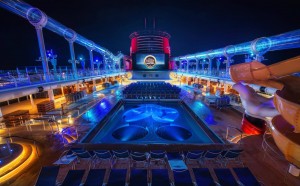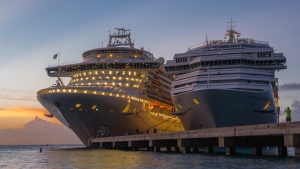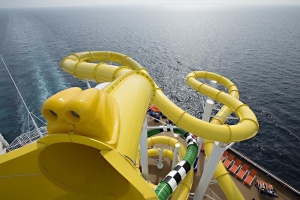Although rarely required, lifeboats are an important component of a cruise ship. Exceedingly high standards of manufacture and compliance are required by law, and any deviation from stringent requirements is a punishable offence. Cruise lines place the safety of passengers and crew as their highest priority, with lifeboat evacuation education playing a significant role in familiarising passengers with the vessel.
Lifeboats are also frequently lowered while in port in order to train the crew and test equipment. Officers and crew are expected to undertake regular training in order to meet all regulatory requirements. Crew members have assigned emergency tasks for situations such as evacuation by lifeboat. Strict governance of the cruise ship industry determines that a cruise ship must be fitted with enough lifeboats to board the full compliment of persons within ten minutes. This is an optimum time frame, with tests generally performed in fine weather, during the day and by agile and mobile volunteers.
Mega lifeboats
The size and capacity of lifeboats has also evolved over time. According to LSA Code 4.4.2.1: “No lifeboat shall be approved to accommodate more than 150 persons.” However, recent advances in lifeboat manufacture and technology have resulted in high standard lifeboats with a 370 person capacity. The Oasis of the Seas was the first cruise ship to fit these mega lifeboats (first photo above article title). An evacuation exercise, although extremely useful, hardly resembles an actual emergency evacuation. On the plus side, a muster drill, even without embarkation, assists passengers to feel well informed and confident to deal with an emergency.
Lifeboat manufacturers test their products using water weights in a safe load testing procedure. Water weight bags are placed in a lifeboat which has been lowered into the water. They are then pumped remotely to fill and drain with water. These bags mimic the weight of passengers and can be situated anywhere in the lifeboat in order to test load results in a range of scenarios.
Weekly and monthly inspections of lifeboats
The International Maritime Organisation provides information related to maintenance, servicing and drilling of lifeboats. Weekly and monthly inspections are carried out by the cruise ship crew, with long term and yearly inspections undertaken by a representative of the lifeboat manufacturer. Ongoing training and inspections result in safe lifeboats handled by competent crew. Any compliance issues are noted by trained inspectors who are qualified to report to the International Maritime Organisation.
A cruise ship is an incredibly strong and durable floating resort, built to resist the power of the ocean. By putting guidelines in place to remove the potential for human error, cruising is safer than ever before. Upgrades in standards and procedures are the result of rigorous testing, with modern lifeboats using only the best materials and technology, meaning you can enjoy your cruise without unnecessary concern, while appreciating the best of the huge range of onboard amenities.
Oasis of the Seas lifeboat photo by Island Nimbus.




